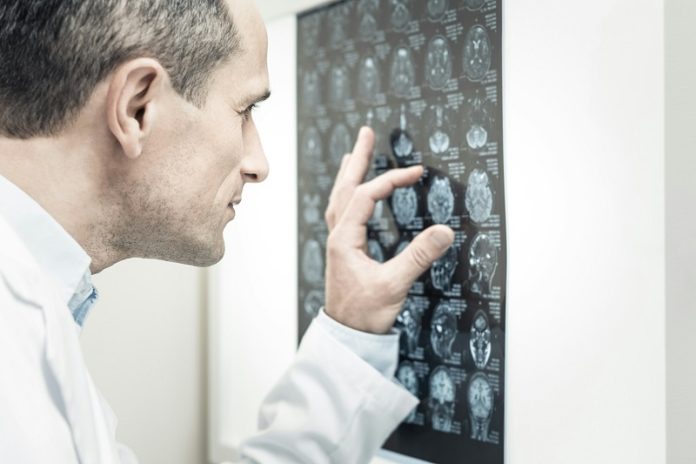
You may already know the common signs of a stroke—sudden vision loss, a drooping face, weak arms or legs, and slurred speech.
But what happens after a person leaves the hospital and starts to recover?
Doctors and therapists at Tufts Medical Center, including vascular neurologists Lester Leung and David Thaler, and physical therapist Gabriele Moriello, recently explained how stroke recovery works and what can affect a patient’s progress.
There are two main types of strokes. Most are ischemic strokes, which happen when a blood vessel in the brain gets blocked.
Fewer are hemorrhagic strokes, which are caused by bleeding in the brain. Both types can damage brain tissue and affect how someone moves, speaks, or thinks.
Recovery after a stroke can begin as soon as 24 hours later, especially for ischemic strokes.
Hemorrhagic strokes take longer to recover from at first, but they can still lead to strong improvements once the bleeding is reabsorbed by the brain.
Although people often improve quickly in the first days and weeks, progress tends to slow down after that. The severity of the stroke will affect how much recovery is possible.
Someone with a mild stroke might regain all abilities, while someone with a more serious one may have lasting challenges. But everyone’s recovery journey is different.
Physical therapy often starts just one or two days after a stroke. Therapists help patients get out of bed, stand, and walk again as early as possible, which has been shown to improve long-term results.
Many patients then go to inpatient rehabilitation centers, where they spend hours each day in therapy.
This may include physical therapy to improve movement, occupational therapy to help with daily tasks, and speech therapy to work on talking and swallowing. After a few weeks, most patients continue with home care or outpatient therapy for up to six months.
Therapy works because the brain is “plastic”—it can learn and adapt even after damage. Repeating movements helps rebuild the brain’s pathways so that patients can relearn important skills.
Emotional recovery is also important. About half of stroke survivors experience anxiety or depression. Some even suffer from post-traumatic stress. Doctors may recommend counseling, therapy, or medications to help with mental health during recovery.
A common belief is that recovery ends after a few months, but Leung says that’s not true. People can keep improving years after a stroke. Researchers hope to create more personalized treatments based on where in the brain the stroke happened.
Preventing a second stroke is also a key part of recovery. Patients are encouraged to manage health problems like high blood pressure, heart disease, diabetes, and obesity through diet, exercise, and medications.
The quality of care someone receives right after a stroke matters a lot. Quick access to treatments like clot-busting medications or procedures to remove a clot can lead to much better outcomes—but they must be done within the first few hours. Getting to a specialized stroke center and having good insurance coverage can also make a big difference in recovery.
Support from family and friends is crucial too. Loved ones can help patients practice therapy at home, providing the repetition needed to help the brain heal. New technologies and techniques are being developed that may improve recovery even more in the future.
Overall, stroke recovery has come a long way, and many survivors are able to return to meaningful, fulfilling lives. But continued research is still needed to help even more people regain their independence.
If you care about stroke, please read studies that diets high in flavonoids could help reduce stroke risk, and MIND diet could slow down cognitive decline after stroke.
For more health information, please see recent studies about antioxidants that could help reduce the risk of dementia, and tea and coffee may help lower your risk of stroke, dementia.



